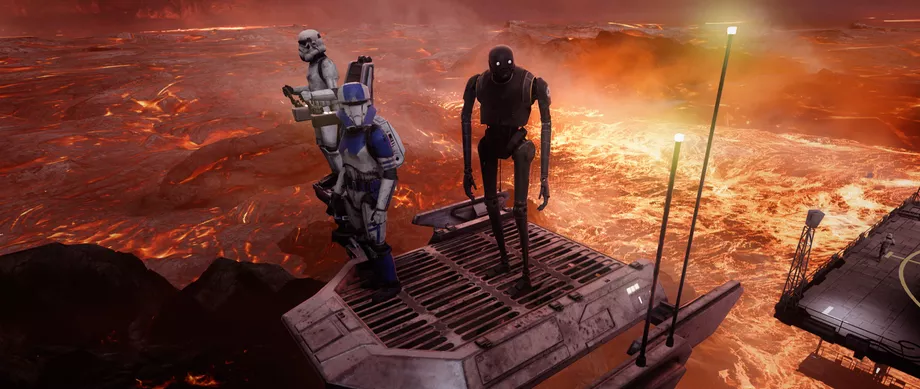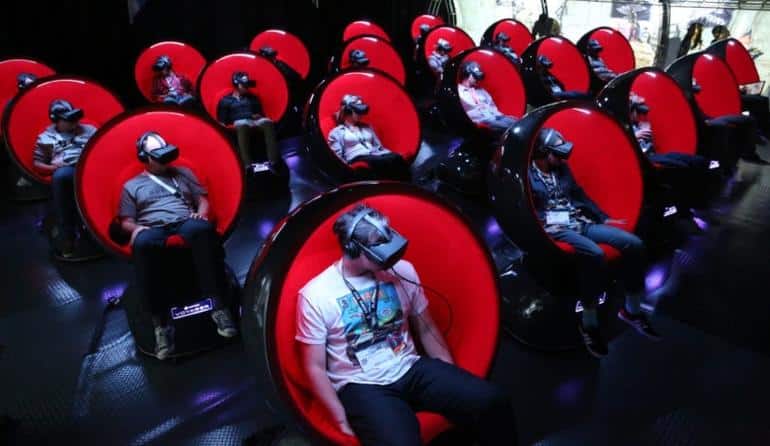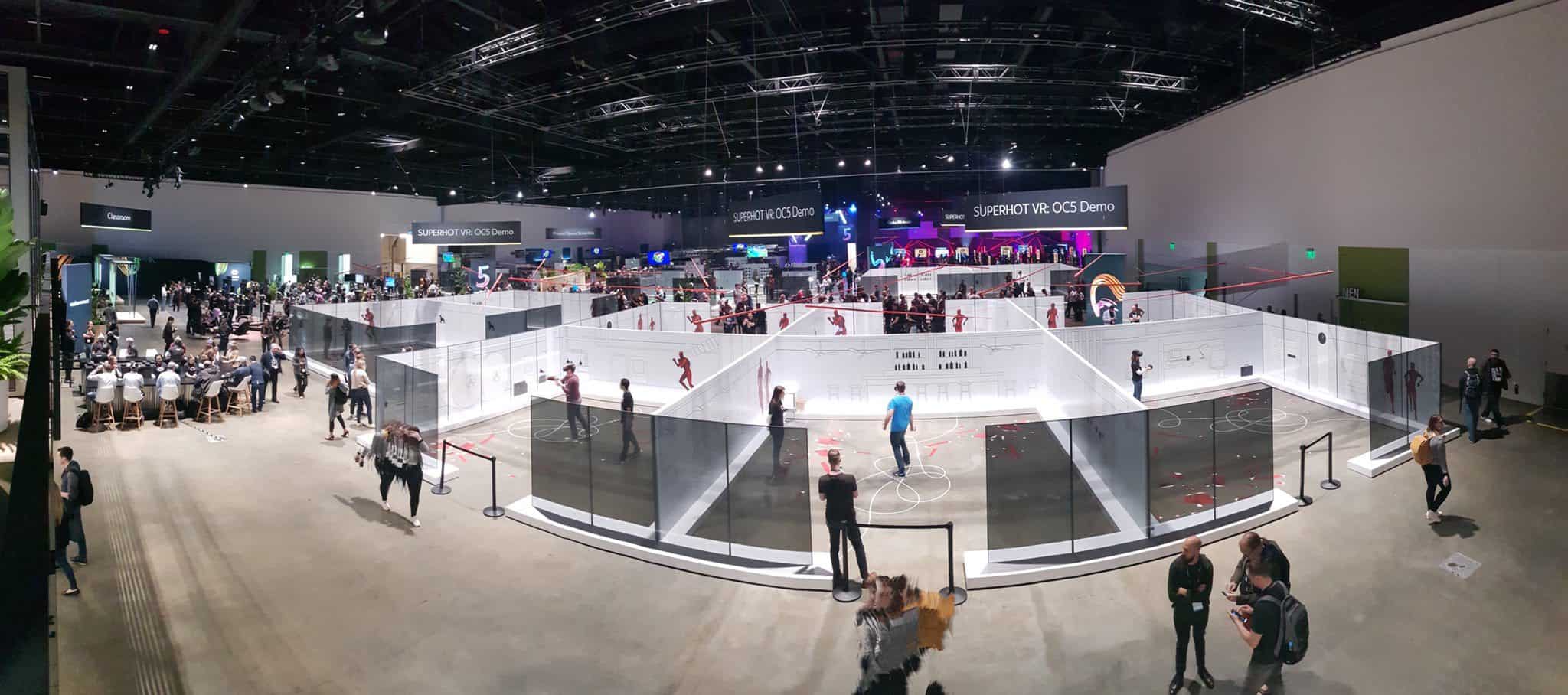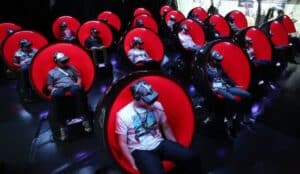Movie tie-ins are a quick win for generating content in virtual reality, but you won’t find the future of VR in movie-like experiences. What sparked this thought was the news that Universal Pictures is releasing a promotional VR experience tied to the movie, First Man.
We’ve seen this with other films such as The Martian, The Lion King, The Hunger Games, School of Rock, and Star Wars doing promotional tie-ins through VR experiences. These are not so much about virtual reality as they are marketing material for traditional cinema.
But you wonder if they’re giving the public a false impression of virtual reality. We’ve grown up well-trained in the art of sitting still for our media. With our still and moving images confined to flat screens on walls and computers, we sit obediently in our chairs (except when we’re on our mobile devices). It’s VR, but only in the most limited of definitions.
The VR-movie tie-ins that impress us
There are only two VR movie tie-ins that have impressed us (feel free to suggest others we’ve missed). The first is The Martian which, even though it was done back in 2016 (light-years ago in VR time), did more than piggyback off the movie. It was Ridley Scott’s experiment with what seemed at the time to be the future of VR. Given the tech he was working with, it was highly interactive, challenging, and fun. And yes, it required a moving chair. But it doesn’t come close to the power of Alejandro González Iñárritu’s, Carne y Arena which elevates VR to an art form.
The other VR movie connection to note is Star Wars which has become the basis for an extended virtual experience with The Void’s location-based VR centers. This is serious free-roaming virtual reality, multiplayer, with multiple endings. It’s so good the movie could almost be seen as an extended promo for the VR experience.

Sitting through the future of VR

There is something painful about those rows of chairs in the First Man VR experience. Don’t get us wrong – the chairs are actually fun to use and make many VR/360° experiences much more realistic.
The Voyager chairs are made by the tech studio Positron and as ZDNet notes, they incorporate
. . . motorized rotation and pitch motion, haptic feedback, 6 degrees of freedom, spatial audio, and built-in VR headsets.
You actually feel more immersive than if you were just watching a 360° video on a 3DOF headset. You’ll see them in selected theaters as the movie is released.
But we’re thrown off-balance when we read lines like the following:
The company envisions the seats will one day fill entire theaters.
Let’s stop right there. Positron (or is it ZDNet?) may be dreaming of thousands of chairs in movie theater across the country, but it’s simply not going to happen.
The vision seems not all that different than the early history of cinema where people thought you needed to film a theatrical play. You have to forgive people for thinking actors could only perform on a stage. That misconception quickly passed – before the end of the silent film era (thanks to Charlie Chaplin, Lillian Gish, and others).
This, too, shall pass.
Collective viewing?
Undoubtedly, there’s a market for 360° video viewing and moving chairs help create a feeling of immersion. But a couple of obvious points: everyone doesn’t need to start viewing at the same time nor do you need to line up in rows as if you’re going to hold hands and share popcorn. Just as movie theaters evolved to serve a unique media format, VR will have to find its own distribution and experiential format. Replicating what’s already been done simply shows a lack of insight.
Last spring, Tribeca Film Festival tried the experiment. They offered a number of simultaneous collective 360° video experiences under the idea that the “audience” (a term that makes little sense in VR) would discuss them afterward. While there were scattered conversations at the end, it was largely due to everyone having some (whether direct or indirect) connection to the film industry. From my perspective in watching the group exit after it was over, it just didn’t make sense as a format for the public.
VR is not inching closer to movies
So when we see headlines like the one in ZD Net – “VR inches closer to movie mainstream with immersive First Man experience” – it makes us shudder. On the contrary, it would more accurate to say that with the First Man VR experience, “Movies inch closer to Virtual Reality.”
The rows of chairs, overpriced popcorn and snacks will disappear. The future of VR is much closer to what we saw last week with the debut of the Oculus Quest VR headset at Oculus Connect 5. VR is about moving around and interacting in virtual experiences. We may even sit and move as part of the same virtual experience.
You don’t need a moving chair – just a good standalone headset that senses the location of walls and other people. We saw that at OC5.
That’s the future of VR.

Emory Craig is a writer, speaker, and consultant specializing in virtual reality (VR) and generative AI. With a rich background in art, new media, and higher education, he is a sought-after speaker at international conferences. Emory shares unique insights on innovation and collaborates with universities, nonprofits, businesses, and international organizations to develop transformative initiatives in XR, GenAI, and digital ethics. Passionate about harnessing the potential of cutting-edge technologies, he explores the ethical ramifications of blending the real with the virtual, sparking meaningful conversations about the future of human experience in an increasingly interconnected world.


I agree, with VR we should not be passive observers stuck in chairs. VR demands interaction and participation. Each of us will have a separate experience, and it’s not necessary to synchronize with everyone else. See my recent article, “The Promise of Location Based VR” at https://XR4Media.com.